
Geneva, March 11: World Health Organization chief Dr. Tedros Adhanom Ghebreyesus, middle, announces his decision that the coronavirus has reached pandemic status at the health agency's Geneva headquarters alongside top WHO officials Michael Ryan and Maria Van Kerkhove.FABRICE COFFRINI/AFP via Getty Images/AFP/Getty Images
In the days after Chinese authorities locked down Wuhan, the city at the centre of a deadly new virus, the director-general of the World Health Organization travelled to Beijing, met with president Xi Jinping and emerged feeling encouraged.
China had taken “extraordinary steps” “to prevent the export of cases,” said Tedros Adhanom Ghebreyesus on Jan. 29. A day later, the WHO declared a public health emergency of international concern, the highest level of alert. Dr. Tedros, however, recommended against a rigorous global response. “There is no reason for measures that unnecessarily interfere with international travel and trade,” he said. Chinese leadership, at the time, was openly critical of plans by other countries to limit travel.
Some countries, Canada among them, followed the advice, waiting another seven weeks to ban foreign travellers. In that time, the virus took root and began its furious expansion. Others weren’t convinced – key among them New Zealand, which is now working toward the complete elimination of COVID-19. Prime Minister Jacinda Ardern’s government consciously departed from WHO counsel, forging an independent path whose success has cast into question the reliability of the international body.

New Zealand Prime Minister Jacinda Ardern gives a COVID-19 briefing in Wellington on April 22.Mark Mitchell - Pool/Getty Images/Getty Images
The World Health Organization was founded with the loftiest of goals – its 1948 constitution seeks nothing less than “the attainment by all peoples of the highest possible level of health.” Now, amidst the greatest health crisis the world has since seen, there are demands for an urgent assessment of how and why it fell so far short of that aim.
On Thursday, Australia became the latest country to call for an independent review into the origins and spread of COVID-19, and specifically how the WHO handled the early information it received from China regarding the initial outbreak in the city of Wuhan. Canada – in a Monday phone call between International Development Minister Karina Gould and Dr. Tedros – has cited a “critical need” for a review of how the pandemic was handled.
Questions surfacing about history of WHO’s director Tedros Adhanom Ghebreyesus
U.S. President Donald Trump has been more blunt, calling the WHO “China-centric” and ordering a suspension of more than US$400-million in annual funding “while a review is conducted to assess the World Health Organization’s role in severely mismanaging and covering up the spread of the coronavirus.”
Supporters of the organization say the WHO has never had the funding or powers needed to assume the role of global health policeman – the task that it is now accused of failing at.
“Until the WHO has the financial, political and legal empowerment to meet these expectations, countries can’t delegate responsibility for protecting their own citizens to an international institution,” said Alexandra Phelan, a global health expert at the Georgetown University School of Medicine.
As the global death toll from COVID-19 approaches a staggering 200,000, how much criticism does the WHO genuinely deserve? How valid are concerns about the undue influence of individual countries? Governments have placed varying amounts of faith in the international body as the crisis unfolded. And, in many cases, those who trusted the WHO the least, like New Zealand, have now fared the best.
Geneva, Jan. 30: The WHO logo is shown at the organization's headquarters ahead of an emergency coronavirus meeting. That day, Dr. Tedros would deem the disease a 'public health emergency of international concern,' short of a full pandemic declaration.Denis Balibouse/Reuters/Reuters
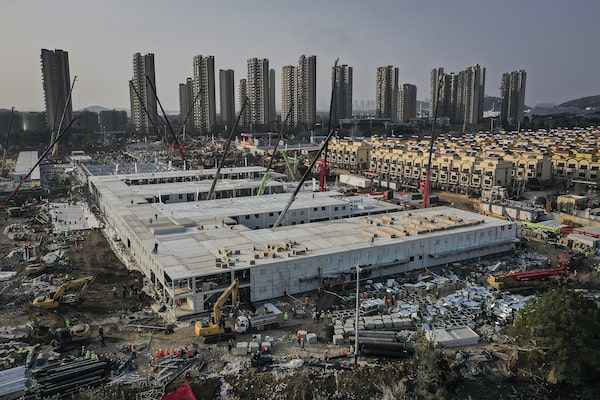
Wuhan, Jan. 30: Construction continues on a temporary 1,000-bed hospital for coronavirus patients in the city where China's COVID-19 outbreak began, which by this point had been largely sealed off from the outside world.Getty Images/Getty Images
On Jan. 30, the WHO declared the coronavirus was a “public health emergency of international concern,” a step that should have alerted governments around the world to the severity of the situation. Canada and other governments, however, delayed moving toward the current lockdown until after the WHO formally declared the existence of a pandemic on March 11.
International health experts say that – in terms of how governments should have reacted – there’s little real difference between a PHEIC and a pandemic. But it was only the belated use of the word pandemic that galvanized public and media attention, and which finally propelled governments, including Canada’s, into action.
“In hindsight, declaring it a pandemic probably meant more than they thought,” said Charles Clift, a former WHO economist who is now senior consulting fellow at the Global Health Programme at Chatham House in London. “To the WHO, it didn’t make much difference. But to the public, it did. Maybe that’s one lesson the WHO should learn.”
Like Canada, New Zealand is a committed supporter of international institutions. So Michael Baker, an epidemiologist at the University of Otago who directs his school’s health, environment and infection research unit, took note of the late-January commentary from the WHO about the situation in Wuhan.
But he also paid attention to darker language coming from elsewhere, including scholars such as Gabriel Leung, who chairs the public health medicine program at the University of Hong Kong. Dr. Leung, a celebrated epidemiologist who had contributed to the global understanding of SARS and led Hong Kong’s response to H1N1, issued a dire caution on Jan. 27. The number of cases in Wuhan, Dr. Leung said then, was likely 15-times higher than had been officially reported. A global epidemic was likely, he said, warning: “substantial, draconian measures limiting population mobility should be taken immediately.”
For Dr. Baker, it was the sounding of an urgent alarm, one he helped to ring domestically. “I know those people,” he said. “I take their views very seriously.”
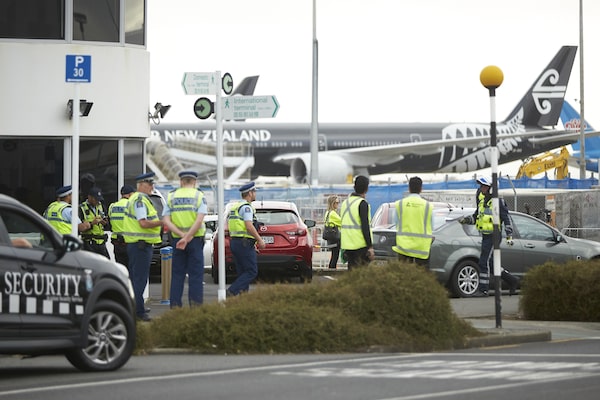
In Auckland on Feb. 5, New Zealand police get ready to escort arriving passengers from an emergency flight from Wuhan to Whangaporoa Military Base for quarantine.Michael Ng/Getty Images/Getty Images
On Jan. 27, New Zealand began looking for signs of the virus on flights arriving from China. By Feb. 3, the country had closed its borders to anyone travelling from mainland China, in defiance of Dr. Tedros. “Early on, we departed from the WHO script,” said Dr. Baker, who now sits on a technical advisory group that meets twice a week by Zoom, and offers advice to the New Zealand government.
They departed from other countries, too. “The agencies we usually look to for leadership – the U.S. Centers for Disease Control and Prevention, Public Health England, the various European centres and Health Canada – we saw nothing coming out of those agencies that was giving us a a clue as to how serious this was,” Dr. Baker said. “So, in the end, we did our own thing.”
Some Canadian experts saw the same worrying signals that New Zealand did. But Mario Possamai, a health consultant who was senior advisor to the Ontario government’s commission on the 2003 SARS outbreak, says that the way the WHO’s January report is written, it would have been easy for countries to miss the problem and go along with the low-risk, no-need-for-high-level-precautions narrative.
Canada, over the years, has seen an erosion of its capacity to independently assess and respond to the threat of a pandemic.
After the SARS pandemic, the federal government created a new body called the Integrated Threat Assessment Centre, which was created to serve as an early-warning system for a variety of problems – from terrorism to the emergence and spread of pandemics. The ITAC was housed within Canada’s intelligence agency, CSIS, and served as an early-warning system within the government, since a pandemic was thought to pose a potential security threat. But as the SARS situation receded into memory, the task force saw its mandate changed in 2008. The acronym stayed the same, but the group became known as the Integrated Terrorism Assessment Centre.
The Public Health Agency of Canada also left unfilled a position in Beijing, which had until 2015 stationed a Canadian doctor in the Chinese capital as a direct point of connection to Chinese health officials. In the absence of its own early-warning system, Canada was forced to rely more heavily on the WHO. “So we trusted the WHO, fine. What we didn’t have was the capacity – our own independent capacity – to verify,” said Wesley Wark, adjunct professor at the University of Ottawa who is an expert on national security matters. “And without that, we lacked the capacity to shock ourselves into action.”
Paris, 1948: The United Nations Security Council holds its first meeting at the Palais de Chaillot. That year, the UN created the WHO to combat global health challenges in a world still reeling from the Second World War.United Nations/United Nations
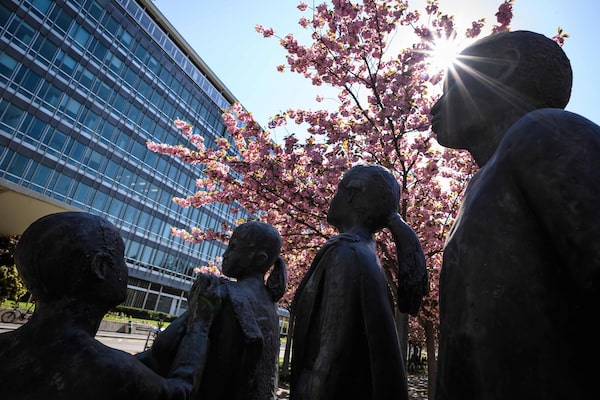
Geneva, 2020: Statues of children keep watch over the WHO's headquarters. Today, 194 nations are members of the global health authority.FABRICE COFFRINI/AFP via Getty Images/AFP/Getty Images
The WHO, which now counts 194 member states, has never been far from the manipulations and gamesmanship of international politics.
It was caught between the U.S. and the Soviet Union during the Cold War. Under Ronald Reagan, the U.S. withheld its contributions to the WHO in a dispute over the organization’s work against corporate interests.
And the inherent politics of operating as a member-run organization have always created constraints. “It would be better not to rely on those governments that have an interest in hiding information. And it would be great to have objective observers who would be able to collect that information,” said Nitsan Chorev, a Brown University scholar.
But that is not how the WHO has been formulated. “It’s not actually, and not supposed to be, autonomous,” Prof. Chorev said. It operates instead on a principle of honour among member states. That can allow it to function across many different borders. But “it comes with a price. For example, the inability to bypass governments – sometimes when it would be the right thing to do,” she said.
“The other side of it is that governments have the ability to influence that organization.”
Dr. Tedros shakes hands with China's President Xi Jinping in Beijing this past January, when the Chinese COVID-19 outbreak was still gaining momentum.Naohiko Hatta/Pool via REUTERS/Reuters
The WHO’s unfailingly complimentary posture toward China has roots in a desire to maintain access to China – or any other regime that might face a crisis. “I know that Tedros has been criticized from the beginning for having too-close connections with China. From my point of view, having close connections with a country where you might see an outbreak – it’s better than having no relations,” said Karin Knufmann-Happe, a retired director-general in the German health ministry.
Ilona Kickbusch, a health consultant who has worked for the WHO and is among the world’s foremost experts on its function, said it is “ridiculous” to call the WHO “a puppet of the Chinese government." However, it’s fair to suggest that “China is seeking greater leverage through international institutions,” she said.
On Thursday, China – which has said it is “firmly opposed” to any independent review of the WHO’s handling of the pandemic – announced it would contribute a further US$30-million to the WHO.
The WHO is bound by the International Health Regulations, or IHR, which were last updated in 2005, in the wake of the SARS crisis, to expand the scope of its remit. But the failings in those regulations have become more prominent in ensuing years. Ms. Kickbusch recited a number of questions that have emerged under the current rules: How can the WHO call out a country if it feels it needs to? How can officials from the WHO enter a country? What can the organization demand from a country? Can there be some sort of “sanctions” if a country doesn’t live up to its responsibilities?
Previous efforts to reform the WHO, however, have failed because “there was a nervousness that if one opened the treaty, then one might actually get a weaker treaty than one already had.”
As it stands, then, the WHO is an international organization without sovereign powers that possesses few options to compel countries to disclose information or forcibly examine the veracity of their claims.
“The WHO doesn’t have any way to get countries to do what it wants, except through diplomacy. The WHO’s strategy was to flatter China to get its co-operation,” said Mr. Clift of Chatham House. “Any alternative, and I can’t imagine what an alternative would look like, would face the same problems – unless you give the WHO an army and a police force.”
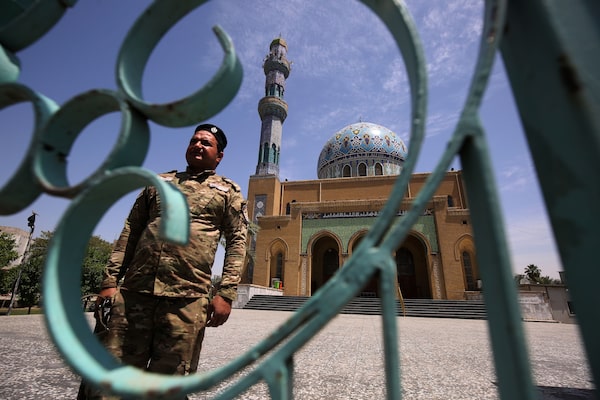
Baghdad, April 24: An Iraqi soldier guards a closed mosque on the first day of Ramadan, Islam's holiest month. The Middle East has been hit hard by coronavirus since February, particularly Iraq's neighbours Iran and Turkey.AHMAD AL-RUBAYE/AFP via Getty Images/AFP/Getty Images

Seoul, April 24: Buddhists wear face masks and stay apart at a service at the Chogyesa temple. South Korea, Hong Kong, Singapore and other jurisdictions that suffered heavy losses in the 2003 SARS outbreak acted quickly to avoid a repeat with COVID-19, and brought their infection curves under control faster than other countries.Ahn Young-joon/The Associated Press/The Associated Press
The countries that did the best job of bracing for COVID-19, according to Ms. Kickbusch, were the countries that went through the experience of SARS. “Hong Kong, Singapore, South Korea, Taiwan – they knew what to do straight away and they did it. Not because they were close to China, but because they knew what this would mean,” she said.
Conspicuously missing from her list of top performers is Canada, which had the worst SARS outbreak outside of Asia, with 43 deaths. Toronto was the only region outside China to which the WHO recommended travellers should “consider postponing all but essential travel” in the spring of 2003.
Ms. Kickbusch says all countries, including Canada, had the information they needed earlier this year to take action to defend against coronavirus, but “were afraid of taking certain political decisions because of the economic and political impact it would have.”
So Canada, like many countries, waited for the WHO to act first.
Even as China was shutting down entire cities and restricting internal travel, Canada stayed true to the world health body’s guidance. On January 30, Public Health Officer Dr. Theresa Tam said Canada would have to justify itself to the WHO if it wanted to take any extra measures to prevent the spread of the disease, such as cancelling flights from China.
“On one hand, there was an awareness that some extraordinary things were going on in Wuhan. On the other hand, there was a view [by the federal government] that this would not be a serious outbreak for Canada. That Canada was only a low risk, that there seemed to be no evidence of person-to-person transmission,” the University of Ottawa’s Prof. Wark said. “But that doesn’t make any sense even with the knowledge we had, quite apart from what we might have known if we’d really been paying attention to intelligence or had our own capabilities.”
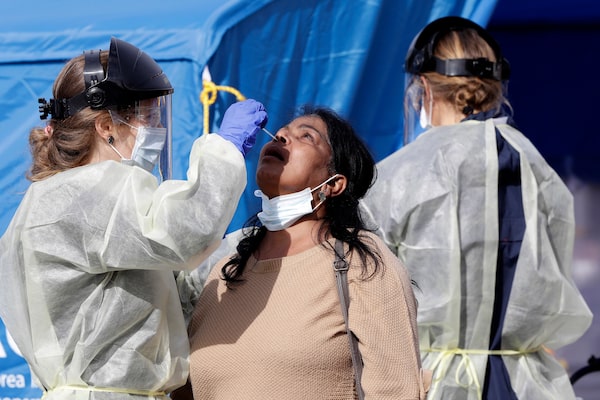
Medical workers test a supermarket shopper who volunteered for a pop-up coronavirus testing station in Christchurch, New Zealand, on April 17.Mark Baker/The Associated Press/The Associated Press
New Zealand, meanwhile, has lost 17 citizens to COVID-19 – some 17-times better than Canada, relative to population, and almost 44-times better than the U.S. When other countries reacted only once coronavirus began to spread inside their own borders, New Zealand sought to stop it from taking root in the first place. Disregarding the WHO was simple, Dr. Baker said: “You just have to provide a justification. There’s no sanctions against countries saying we have to do things differently of our circumstances.”
The country’s swift response is not in itself an indictment of the World Health Organization, but it also doesn’t mean the organization was blameless. Dr. Baker was frustrated the WHO did not move more quickly to label the virus a pandemic. And it “should probably have been much more assertive about restricting travel. Because that was really the key to containing this virus early on,” Dr. Baker said.
The decision to close borders early was not difficult, said Nigel Raymond, a physician and expert in infectious diseases at Wellington Hospital who was also on the New Zealand technical advisory group. It was obvious that failing to do so would mean opening an avenue to import infections; the duration of incubation periods meant the only way to fight the epidemic was to act early.
“We could see the writing on the wall if we didn’t do something effective,” he said.
Sign up for the Coronavirus Update newsletter to read the day’s essential coronavirus news, features and explainers written by Globe reporters and editors.
 Mark MacKinnon
Mark MacKinnon Nathan VanderKlippe
Nathan VanderKlippe Grant Robertson
Grant Robertson